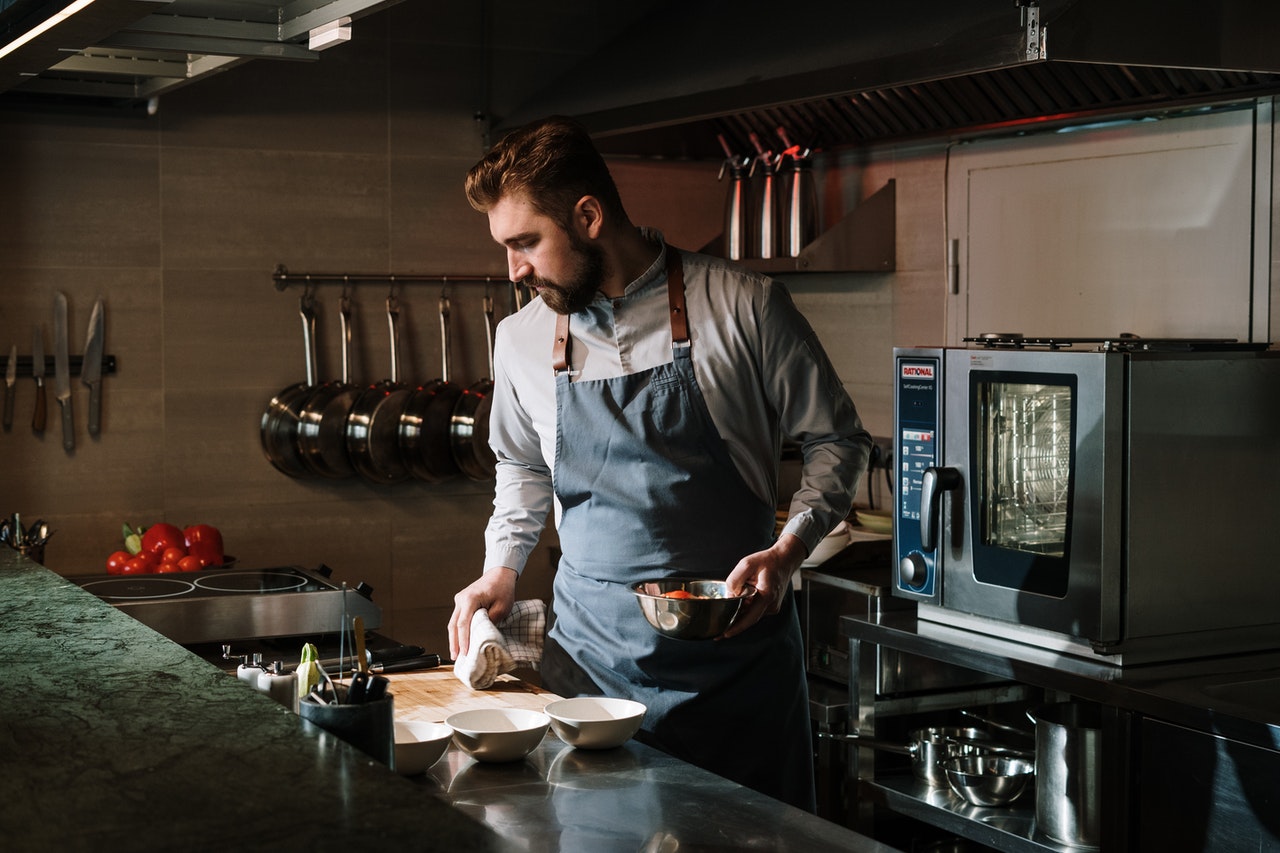The Chef’s uniform, or Chef whites as they are more popularly called, has a long interesting history steeped in tradition, and there are many fictional and real stories associated with many parts of the Chef uniform that are very interesting indeed.
The Chef uniform was originally created in 1822 by French Chef Marie-Antoine Carême, who can be considered as the first ever celebrity chef in the world, however, Chef whites didn’t become popular until late 1878, and was later standardized by Auguste Escoffier. Although the Toque, or Chef’s hat, was already in use, Chef Carême wanted to create something special that honored Chefs and their abilities and professionalism, and thus was born the Chef uniform. Chef Carême was very specific in his creation, and made the uniforms in white fabric to portray cleanliness, as his theory was that a proper chef should be able to work with minimum or no spills. However, considering that a certain degree of spills or dirtying of their Chef whites was unavoidable according to the kitchen environment, Chef Carême preferred the white color, as any dirt, however small, would instantly be visible against the white background, and hence the Chef could quickly change into a clean Chef coat or jacket.
In addition, Chef whites are much easier to clean using bleach and other detergents, because using bleach on any other color would make it fade.
What are the important components of both a men’s and women’s Chef uniform?
The Hat – The Chef Hat is also known as a Toque Blanche, Toque meaning ‘brimless hat’ and Blanche being the word for ‘white’ in French. Traditionally the height of a Toque indicates the Chef’s rank, with taller hats being worn by more senior Chefs, and shorter ones being worn by assistant or specialty chefs. Cooks and other kitchen helpers are usually given Skull Hats or Beanies. The number of pleats on a Toque also indicates their level of experience, the more the pleats the higher the level of experience of the Chef. A popular tale is that the 100 pleats on a Chef’s hat indicates the number of ways that they know how to prepare a simple egg. However, in recent times even senior Chefs prefer to wear a simple hat that is more convenient and comfortable when cooking, unless they are going out to meet VIP’s or are part of a function or event.
The Chef’s hat is also steeped in history and folklore. A popular story is that King Henry the VIII had beheaded a Chef after he found a hair in his food, and following this ordered that all Chefs wear a hat for hygiene purposes. Another story states that during the 7th century, many kings were being poisoned by their enemies, and hence the position of Chef was given to only highly trusted individuals in the royal court, and these Chefs were paid a very handsome remuneration by the king as well as giving them a place of honor with a cloth hat that was quite similar to the royal crown, in order to maintain their loyalty to the king. Truth or fiction? We don’t know, but it certainly makes the history of the Toque very interesting.
Chef Coat – A very important part of any men’s or women’s Chef uniform is the Chef coat. It is traditionally made of a very breathable heavy material, usually cotton, and can be with either short or long sleeves, depending on the Chef’s preference, although long sleeves protect their arms from burns and other hazards. These coats are double breasted in design and are reversible, enabling the chef to quickly hide any stains or dirt in an instant if they need to go out and meet customers.
Chef Pants – Chef pants are generally made with a black and white checkered fabric and are baggy and loose, enabling greater ease of movement for the chef as he or she works in the fast-paced kitchen environment. The checkered fabric also hides any dirt or grime that may have got on it, and the bagginess of the pants protects the wearer’s skin from hot spills etc.
Chef Apron – The apron is not considered as a part of the traditional men’s and women’s Chef uniform, but it certainly is essential. The apron usually covers the wearer from the upper body up to the knees, giving them double protection from kitchen hazards and accidents.
Chef Shoes – Shoes that are worn by Chefs should be both comfortable and provide safety, as they are generally on their feet for the better part of a day, and they should also fit well and be great at absorbing shock. Non slip and steel reinforced toe tips are essential for shoes to protect the Chef’s feet from falling heavy objects.






